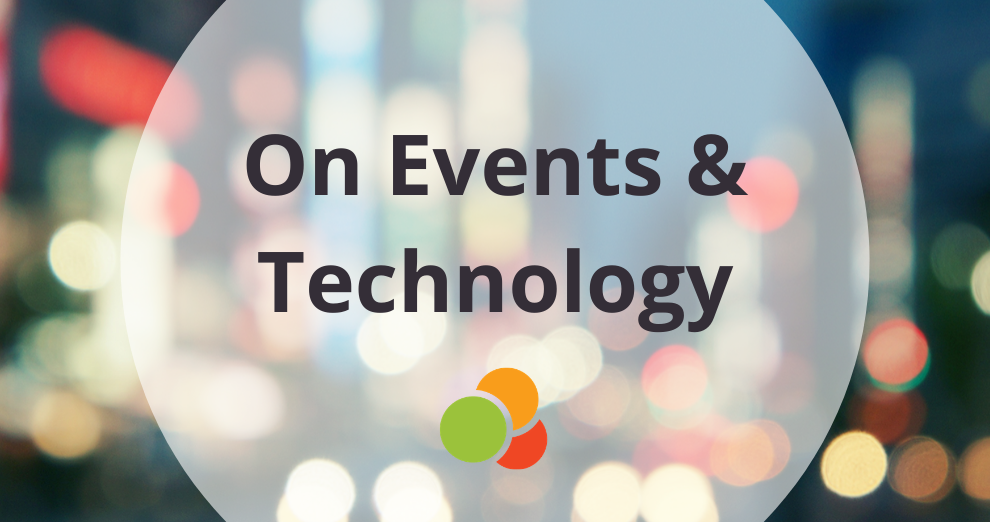-
Software
Compliance Software
Oversee licenses, track renewals, access documents, and more from a single interface.
Software Overview -
Services
Compliance Services
Full service compliance solutions for organizations throughout their entire lifecycles.
Services Overview -
Industries
-
Partner
- Information Center
Meaningful Event Networking: Matchmaking, Meetings, and More
Posted on February 28, 2020 by Harbor Compliance in Fundraising and Grants.

Irrespective of industry, role, or personality, networking can be challenging— especially at events. The concept of networking is hardly new. It’s been around as long as people have identified the need to connect with others to build and nurture meaningful business relationships. Meaningfulness, in this context, is defined as the cultivation of potential for opportunity.
The act of networking necessitates certain interpersonal skills, some of which many people find difficult to hone. It can be more daunting when you add to that an unfamiliar environment, like a conference or tradeshow, seemingly infinite variations of personality, and time constraints.
How do you increase your odds of success when networking? While there are tools that can support much of the weight of connecting people with others, there’s still work for the attendee. And what of the event host? His or her job is that much more challenging.
Enter technology: the power of computing, machine learning, and artificial intelligence.
Networking and the digital age
In the old days, event attendees bought their tickets, showed up to the venue at the appointed time, and hoped for the best. Standing in the buffet line, smiling, and putting on the charm may have worked for some people. Others who weren’t so outgoing may have struggled to the detriment of their business.
Today, more than 80% of attendees who go to events do so for networking purposes (EventManager, 2020). That puts the onus on the event planner to create a physical and cultural environment that facilitates networking. This translates to a few things, to start:
- Data collection
- Audience segmentation
- Personalization
The more you know about the communities you’re serving, the better. Virtually without limitation, technology can help collect and aggregate information to help you build a great experience for your attendees. Use the data you already have (from your CRM or AMS, for example) to inform how you approach networking at your event: what do people have in common, where do their interests diverge or conflict, and what relationships are they looking to build?
Data collection
Your organization likely already has a preferred tool to collect data on the people you serve. It’s this data that feeds into tools like artificial intelligence, or “AI,” and sets parameters for ideal conditions. In the context of events, all data collected at registration, or through your business’s CRM, can be leveraged to create a more dynamic and engaging experience for attendees.
Audience segmentation
The data you have on-hand can be used in a number of ways. Giving you insights on how to segment your audience is at the top of the list. All of your messaging, from the tactical to the aspirational, should be built around what you know about your audience. For example, whether they have or have not booked their hotel, checked in to a session, or registered but never physically showed up— this can all be factored into your messaging.
Personalization
Collecting data and segmenting your audience are critical first steps to personalizing the event experience. The more information you collect, the more deeply personalized your messaging can be. With respect to networking, and communicating with attendees about networking opportunities, make it clear where they can find the most value. If they’re donors looking to contribute to specific causes, tell them what resources are available to them to give.
Business relationships in context
Event planners know exactly who will be in the room(s) and no doubt spend tireless hours thinking of the possible ways things could go wrong. Fundraising adds yet another layer of complexity but the same principles apply. Building a great attendee experience means considering the relevant relationships in context. Below is a list of some common examples:
- charity/donor
- mentor/mentee
- planner/supplier
- recruiter/talent
- buyer/seller
- investor/entrepreneur
As you look to facilitate meaningful networking among multiple audience segments, consider desired outcomes and shared or opposing interests. Acting on these insights, as in event matchmaking, is easy if you have the right tools.
Tools that foster community
We’ve come a long way since “you’ve got mail” and chat rooms were introduced. The web is not only a digital marketplace, it’s embedded in our culture and institutions. It powers a whole host of tools that connect people with peers and information. The availability of these tools is increasingly widespread across business and evolving more each day. A few of the most powerful examples on the edge of growing trends are event apps, gamification, and of course, social media.
Event apps
Audiences that span across generations already think of their phones and tablets as lifelines. Apps have the capacity to turn mobile devices into even more specialized tools. Event attendees use apps to navigate large conference venues, keep track of their schedules, and to connect with others. They can help take some of the pressure off of more introverted guests and can boost engagement for those for whom networking comes naturally.
Many meeting planners find value in providing branded event apps to support their communities. These mobile-ready tools are designed to give attendees control of their entire experience, right at their fingertips.
Gamification
Playing on the natural human desire to compete and achieve is another great way to engage people, get them talking, and help your more introverted guests get traction at your event. Because of this, gamification at events is a growing trend for businesses— nonprofits included.
Gamification helps event organizers drive and track desired behaviors, creating boundless opportunities for engagement among attendees. In the context of networking, gamification can help incent shy or disengaged guests to start conversations by adding a fun, interactive element that’s low-risk and low-pressure.
Social media
Public social channels, like Twitter and Facebook, may not be appropriate for all of your events. However, social media is not only a great way to generate demand for your event or conference, it’s a great tool for networking and engagement as well. Channels like LinkedIn, for example, that are dedicated to the professional sphere can be instrumental for your attendees. This is especially true if you provide a searchable meeting or attendee directory— either on your conference website or event app— before the event. This ensures you’re giving them a chance to scout out who they may want to connect with on-site.
Give your audience a reason to come to your event year after year by creating an experience they won’t forget. Whether you choose to use some, one, or all of these insights, you will increase your attendees’ odds for successful networking by adding the right technology to your toolbox.
Harbor Compliance does not provide tax, financial, or legal advice. Use of our services does not create an attorney-client relationship. Harbor Compliance is not acting as your attorney and does not review information you provide to us for legal accuracy or sufficiency.

Equal parts voracious reader and passionate writer, Maggie is an expert in communication principles and practices that help drive positive impact for business. As Marketing Manager for Pathable, Inc., she’s customer-obsessed, results-oriented, and dedicated to celebrating the value of highly customizable event app and web solutions for event planners across industries around the globe.





